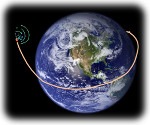
 |
Bologna Symposium 1989, a review |
This review was published in Studies in Conservation in 1992
Science, Technology and European Cultural Heritage
Proceedings of the European Symposium, Bologna, 1989
Edited by N.S.Baer, C.Sabbioni and A.I.Sors.
Published by Butterworth-Heinemann Ltd. 1991
Most of the one hundred and seventy articles that fill the near thousand pages of this weighty volume are about the decay of stone. The Knights of the Black Crust are present in force, describing the layer of gypsum, iron oxide and tar that disfigures most stone and concrete buildings in industrial cities. These veterans have been supplemented by several Marble Slab Squads. These newcomers are inspired to great feats of analysis by the original warriors who grew fat and nearly famous from the Reagan era acid rain research project. This produced several shelf miles of learned consultants' reports which, once one had penetrated the protective varnish of jargon about deliverable damage functions for non-portable cultural property, revealed that marble dissolves in rain and in acid solution exactly as described in school textbooks. There are, however, internal weaknesses and disputes that threaten the dominance of the "Acid Rain can damage your home" theory. Some heretics from Britain and America are suggesting that now the rate of dissolution of limestone even in urban areas is close to that expected from clean rain. One could add that the increasing carbon dioxide concentration in the air will further increase the potency of clean rain.
But now comes an entirely unexpected threat to the stability of the scientific consensus: a band of microbiologists emerges from the mists of the North German plain shielded by Petri dishes and copiously supplied with nutritious gels. These revolutionaries claim that stone decay is caused by pigs, or, to put it less crudely, by modern agricultural practice. Furthermore they claim that alkaline rain is the culprit. The ammonia released through the decay of the waste products of millions of four footed beasts (one is too delicate to enquire about a possible contribution from us folk) is absorbed on stone surfaces and oxidised by bacteria to nitrite. This is then further oxidised by different bacteria to nitrate, with dissolution of carbonate minerals. Oxalic and citric acids are also detected as biological products.
We can look forward to another round in the drama, at the Lisbon meeting on the Deterioration and Conservation of Stone. The state of play in 1989 was summed up by a distinguished group of seven authors from Dublin: "The current knowledge about stone consolidants, repair mortars, and cleaning is limited. The technical information on conservation and restoration processes and the techniques available to architects in practice, is inadequate, and there is a limited availability of workmen skilled in restoration." This opinion is on page 779, by which time I was ready to concur.
A similar viewpoint is expressed by Giorgio Torracca, unconstrained by the careful consensus prose of multi-author articles: "..there had better be a conservation technology soon, otherwise the damage inflicted on the monuments of the past that we claim we are preserving could be terrible."
However, I do not intend to give the impression that all the endeavours reported in this volume deserve such criticism. It is in fact impossible to evaluate most of them because they are very brief and the data, if presented at all, is necessarily summarised and further smudged by the NCRC publication format (nearly camera ready copy). The book can best be used as a source for references to the full account, for there is little new here. It should also be useful for contacting the contributors who seem to be working on a similar problem to one's own, but this is risky because the full address of the author is seldom printed.
The editors, in their preface, "acknowledge with gratitude [the authors'] cheerful response to the idiosyncratic nature of scientific English." They must of course have been referring to the contribution by Gael de Guichen. He quotes some profound truths culled from the pages of Recent Setbacks in Conservation and continues with a rather poetic analogy about scientists trying to communicate with conservators, like satellites launched for a specific purpose but then drifting out of orbit while continuing to send ever more garbled messages down to earth.
The idea of launching this book into space became steadily more appealing as I ploughed through it. I thought of all those who enjoyed the good fellowship and excitement that such meetings generate, without feeling an overpowering need to read through all the posters or attend all the lectures. Your humble reviewer senses just the hollow echo of the event as he sits alone in the reader's service, struggling against drooping eyelids that even a pillow studded with steel needles could not hold apart. In Denmark such voluntary contributions are rewarded with a bottle of red wine. I have a steadily growing cellar because, actually, I prefer white. The editors, of course, deserve a whole case of Chateau Croutenoire '89.
Tim Padfield, The National Museum of Denmark. 1992
Author's note: This is the only published work by me that has immediately provoked two letters of praise from senior figures in the conservation profession. I am impressed also that the Studies editors accepted it.

This work is licensed under a Creative Commons Attribution-Noncommercial-No Derivative Works 3.0 License.